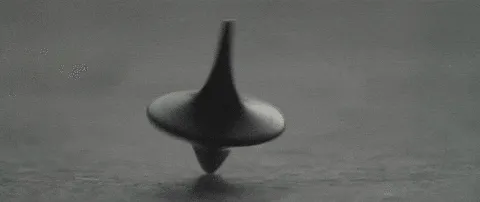Nice Try, Google, But That’s Not Recursion
How the tech industry co-opted the definition of something they fundamentally don't understand
Every once in a while, a misunderstanding ends up becoming a new reality—and in this case, the tech industry is the perpetrator, making all of us just a little more misinformed.
What the hell am I on about? A little-understood word called recursion.
To illustrate how little understood this word really is, particularly in the tech field, let’s ask an AI—Grok, specifically.
I have only two words for that: ummmm, no.
Lest you think otherwise, trust me—it’s not just Grok that gets this wrong.
The first sentence gives it away: “Recursion is a programming concept…” No, it really isn’t. I have no doubt that would be news to Italian painter Giotto, who used recursion in his painting Stefaneschi Triptych around 1320. Houston, we've got ourselves a problem.
Let me save you some time and be direct: recursion existed well before programming, and it has existed in multiple fields like logic, art, language, architecture, and others for a very, very long time.
What likely happened is that programming became so big, so popular, and recursion—already misunderstood and rarely discussed—got gradually narrowed down largely to just programming.
Fear not, for even when it is discussed outside of programming, it is still perfectly misunderstood.
Let’s look at my favorite example: the wonderful, mind-bending film Inception.

\ Entire websites are dedicated to breaking down the recursion in the film that doesn’t exist. You’re probably asking yourself, “Then what are they on about?” The answer, at least for Inception, is nesting.
Nesting, which is not recursion, is when we have things within things within things. Of course, the best example is Russian nesting dolls (I mean, it’s kinda in the name), but this is exactly what happens in the movie—there are dreams within dreams within dreams. So it’s an absolutely wonderful and beautiful example of nesting, but it’s not recursion.
Let’s continue and look at another tech example of what recursion certainly isn’t.
Type “recursion” into Google. Near the top it says “Did you mean: recursion,” with “recursion” appearing as a hyperlink. Click that, and it loads the same page again, creating an infinite loop without a hint of actual recursion.
Facepalm.
@Google: That is an example of a loop, not recursion #GetItRight
So what the hell actually is recursion?
Well, I had to come up with my own definition—because that seems to be the popular thing to do these days. The thing is, my definition is broad enough that it defines recursion in a manner where it can be applied to multiple fields—you know, like how it was before Big Tech got involved.
The cumulative self-reference doesn’t have to go on forever or be particularly long—it can be either finite or infinite.
It also has nothing to do with “base cases,” except in a few fields, so let’s return to Italian painter Giotto to see some real recursion.
In Stefaneschi Triptych (c. 1320), he depicts Cardinal Stefaneschi kneeling before St. Peter, offering him the very painting you’re looking at—an image of the painting within the painting. Now that’s recursion: an object containing a representation of itself.
But let’s make it even simpler, because this can be a mind-bending topic, for sure—two mirrors facing each other.
Now that’s crazy recursion in action. See, each new image reflects the last, creating a seemingly infinite strain of smaller and smaller mirrors. Each new image contains the previous, which contains the previous, and so on and so forth.
That’s recursion.
Pardon me, but I must reemphasize:
Phew! I feel better. The world now shines just a little brighter because I’ve cleared up a topic that no one knew needed fixing.
Think about it.
I had a thought about recursion.
That thought about recursion led to an investigation.
That thought about recursion led to an investigation that led to identifying a problem.
That thought about recursion led to an investigation that led to identifying a problem that led to fixing it.
That thought about recursion led to an investigation that led to identifying a problem that led to fixing it that led to this sentence you’re now reading, encasing you in a whirlwind of recursion that leaves your head spinning.
And lest you have any doubts, ultimately, who did I reference for my understanding of recursion?
Well, myself, of course.
You May Also Like

Solana holding key support: breakout likely if bulls step in

Ai&Meme Daily, a picture to understand the popular Ai&Memes in the past 24 hours (2025.5.7)
